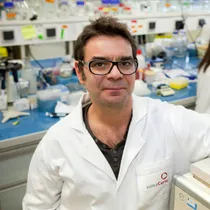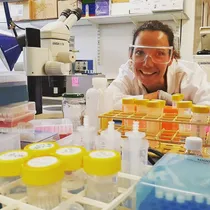- Home >
- Publications >
- AsiDNA Is a Radiosensitizer with no Added Toxicity in Medulloblastoma Pediatric Models
AsiDNA Is a Radiosensitizer with no Added Toxicity in Medulloblastoma Pediatric Models
Authors
Sofia Ferreira, Chloe Foray, Alberto Gatto, Magalie Larcher, Sophie Heinrich, Mihaela Lupu, Joel Mispelter, François D. Boussin, Célio Pouponnot, Marie Dutreix
Abstract
Abstract
Purpose:
Medulloblastoma is an important cause of mortality and morbidity in pediatric oncology. Here, we investigated whether the DNA repair inhibitor, AsiDNA, could help address a significant unmet clinical need in medulloblastoma care, by improving radiotherapy efficacy without increasing radiation-associated toxicity.
Experimental Design:
To evaluate the brain permeability of AsiDNA upon systemic delivery, we intraperitoneally injected a fluorescence form of AsiDNA in models harboring brain tumors and in models still in development. Studies evaluated toxicity associated with combination of AsiDNA with radiation in the treatment of young developing animals at subacute levels, related to growth and development, and at chronic levels, related to brain organization and cognitive skills. Efficacy of the combination of AsiDNA with radiation was tested in two different preclinical xenografted models of high-risk medulloblastoma and in a panel of medulloblastoma cell lines from different molecular subgroups and TP53 status. Role of TP53 on the AsiDNA-mediated radiosensitization was analyzed by RNA-sequencing, DNA repair recruitment, and cell death assays.
Results:
Capable of penetrating young brain tissues, AsiDNA showed no added toxicity to radiation. Combination of AsiDNA with radiotherapy improved the survival of animal models more efficiently than increasing radiation doses. Medulloblastoma radiosensitization by AsiDNA was not restricted to a specific molecular group or status of TP53. Molecular mechanisms of AsiDNA, previously observed in adult malignancies, were conserved in pediatric models and resembled dose increase when combined with irradiation.
Conclusions:
Our results suggest that AsiDNA is an attractive candidate to improve radiotherapy in medulloblastoma, with no indication of additional toxicity in developing brain tissues.
Teams



Members



